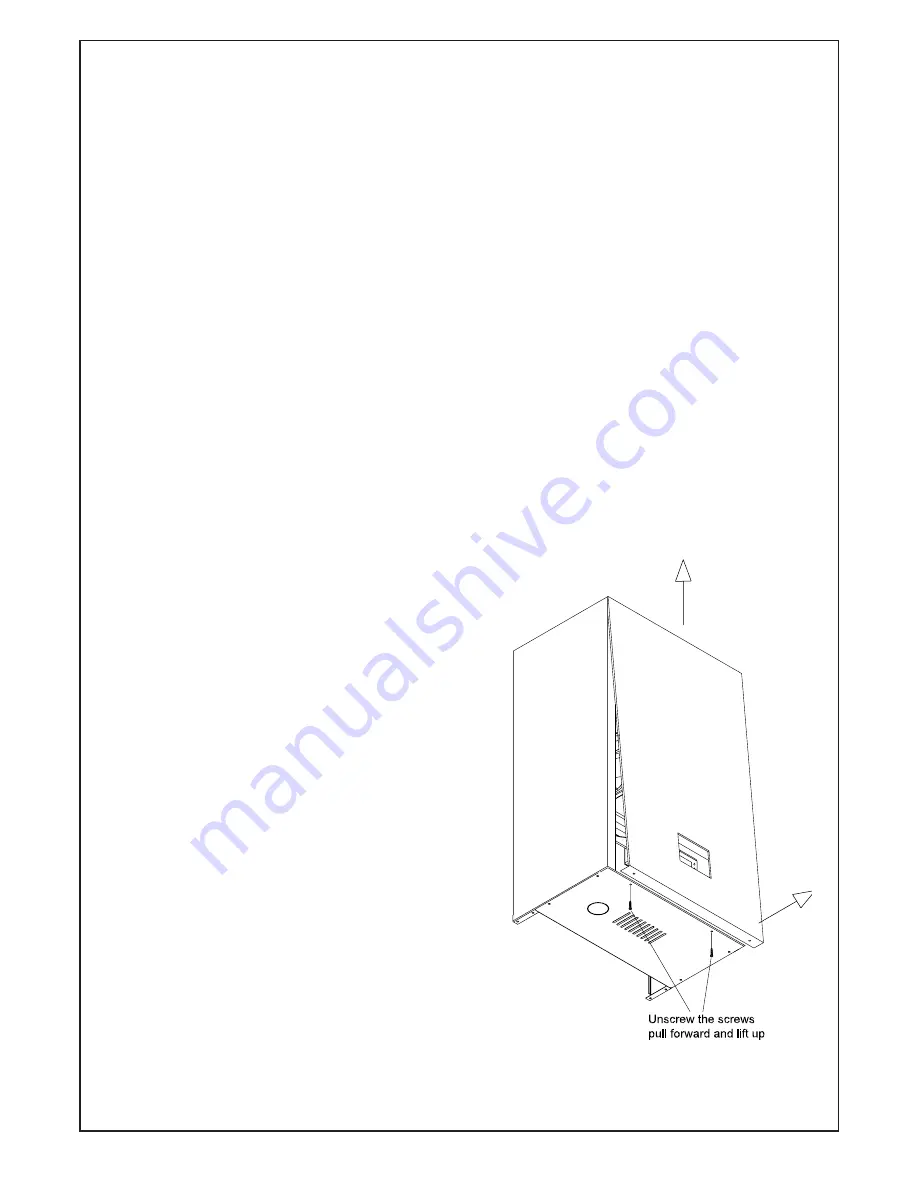
-
IMPORTANT:
After completing any servicing or
replacement of gas carrying components it
is essential that a test for gas soundness
is always carried out along with functional
checks in operation.
7.2
TO INSPECT AND CLEAN THE
APPLIANCE
Before carrying out the cleaning
operation, cover the electrical control
panel with a piece of waterproof material
to protect it from debris.
Inspect the heat exchanger for any
blockage. Deposits of any material should
be brushed away using a soft brush.
NOTE:
Do not use brushes with metallic
bristles.
Examine internal pipe-work connections
and automatic air vent for any water leaks
and rectify if necessary.
Examine and remove loose debris from
Examine and remove loose debris from
the combustion chamber using a soft
the combustion chamber using a soft
brush and vacuum cleaner. Carefully flush,
brush and vacuum cleaner. Carefully flush,
by spraying water at any remaining debris
by spraying water at any remaining debris
through the condensate trap.
through the condensate trap.
(Ensure the water is kept away from
(Ensure the water is kept away from
electrical components).
electrical components).
Inspect the siphonic condensate trap for
Inspect the siphonic condensate trap for
a blockage. Remove the cap at the base
a blockage. Remove the cap at the base
of the condensate trap. Remove an
of the condensate trap. Remove any
debris found. Remove the float to clean it.
Any deposits should be flushed out.
Reassemble and refit the condensing
trap.
When refitting the cap ensure that a
watertight seal is achieved, but do not use
excessive force.
Examine the spark and sensing electrodes
for any mechanical damage. Clean away
any debris and check the spark and sensing
gap.
Examine flue duct and flue manifold and
ensure that there is no obstruction.
Examine the gasket at the entry into the
flue manifold.
It is essential that a good seal is made at
the outlet to the flue manifold, renew this
gasket if there is any sign of damage or
deterioration.
8 REPLACEMENT OF PARTS
8.1 GENERAL
Replacement of parts must be carried
out by a competent person.
Before replacing any parts the boiler should
be isolated from the mains electric supply
and the gas should be turned off at the
service cock on the boiler.
After replacing any parts always test for
After replacing any parts always test for
gas soundness and if necessary carry out
gas soundness and if necessary carry out
functional test of the controls.
functional test of the controls.
For replacement of parts, the front, and
For replacement of parts, the front, and
bottom panels of the boiler will need to be
bottom panels of the boiler will need to be
removed (it is not necessary to remove the
removed (it is not necessary to remove the
side panels as all parts are accessible from
side panels as all parts are accessible from
the front or beneath the boiler).
the front or beneath the boiler).
8.2
TO REMOVE THE BOILER PANELS
8.2
TO REMOVE THE BOILER PANELS
To remove the front panel unscrew the two
To remove the front panel unscrew the two
lower screws that secure the front panel to
lower screws that secure the front panel to
the boiler and lift off
the boiler and lift off
..
Fig. 39
45
Summary of Contents for CS 80 T
Page 2: ...2 ...
Page 21: ...21 4 10 FLUE TERMINAL POSITION ...
Page 54: ...10 ELECTRICAL SYSTEM DIAGRAM 54 Fig 56 ...
Page 55: ...55 11 SPARE PARTS Fig 57 ...
Page 61: ...61 ...
Page 62: ...62 ...
Page 64: ...64 FLOWCHART FOR CO LEVEL AND COMBUSTION RATIO CHECK ON COMMISSIONING A CONDENSING BOILER ...
Page 65: ...65 12 1 ANALYSER CHECK LIST ...
















































